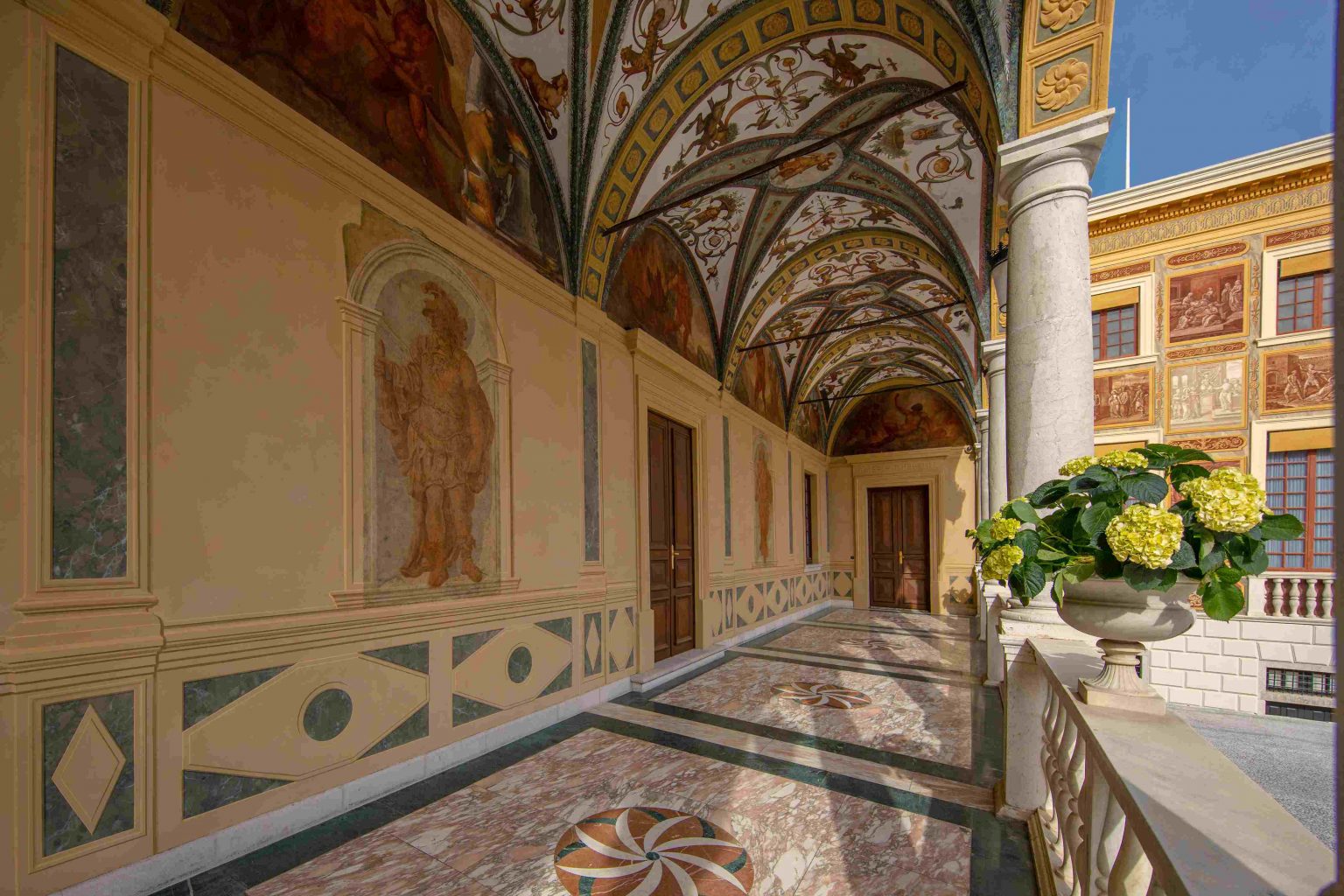The Prince's Palace of Monaco, one of the Principality's most iconic sites, is reopening to the public from 2 April. Visitors can expect to step back in time as they admire its well-preserved treasures, including restored frescoes dating from the Renaissance period.
In a few days' time, visitors will be able to glimpse inside the House of Princes with a tour of the sumptuous State Apartments, and marvel at the exceptional frescoes from the Italian Renaissance period, covering a total surface area of 600 m2.
The vast and eco-friendly restoration process took eight years to complete, and is one of the most important projects of its kind in Europe!
Discovering heritage



The Palace of Monaco, which has always been home to the current Princely Family, is maintained on a daily basis for the requirements of day to day and diplomatic life. In 2014, while restoration experts were working on the façade of La Régie, part of which was crumbling, they noticed what appeared to be older motifs beneath the layers of paint, painted directly onto the wall.
It marked the start of a series of discoveries that led Prince Albert II to quickly order closer investigations. In the space of a few weeks, other traces of old frescoes were uncovered in other rooms of the Palace. And so the great restoration-conservation project began!
Thanks to the scalpels and painstaking work of the experts, the Renaissance has been brought to life once more, on the ceilings and walls of the Prince's Palace. For almost ten years, a team of experts has been uncovering hidden treasures, including a 50 metre-long gallery.
In the 16th century, a technique known as "al fresco" involved applying pigments to a freshly rendered surface, to preserve them for as long as possible in the material. The restoration meant removing all of the areas painted in the 19th century. To reveal the treasures underneath without damaging them, the experts needed to recreate the pigments of the time.
The finest paintings are to be found in the Galerie
d’Hercule, where the frescoes were discovered for the first time, and also in the Salon Matignon renamed the Chambre d’Europe for the marvellous medallion depicting the mythological story of the abduction of Europa.
A pioneering project in terms of sustainable development.
The Prince wanted "this project to be respectful of resources, techniques, and people". Around forty specialists of different nationalities worked on a truly environmentally friendly restoration.
The use of solvents to remove paint was banned, in favour of scalpels and laser treatments. For the retouches, natural mineral pigments were used with the "trattegio" technique (minuscule parallel lines) to ensure they could be distinguished from the original parts.
This vast project is due to be completed by the end of 2025. Unless further new discoveries are made, in the last three rooms of the "old quarter", where surveys are yet to be conducted…


Frescoes and more besides!
But that is not all. The State Apartments have been refurbished with some remarkable artworks added. For example, the green antechamber now houses paintings by Jacopo
Bassano, Orazio de Ferrari and Philippe de Champaigne, which were recently purchased by Prince Albert II.


A Palace full of surprises!
Every summer, the famous Monte-Carlo Philharmonic Orchestra performs in the Cour d’Honneur at the Prince’s Palace. The Philharmonic first played at the Palace back in 1959, rekindling a secular tradition of the Grimaldi family. The orchestra sets up between the two 17th century staircases, and the magic is instant. Classical musical and the Prince’s Palace are truly a match made in heaven…
%20Palais%20Princier.jpg)
Авторство фотографий:
Benjamin Vergély / Palacio del Príncipe / Geoffroy Moufflet / Michael Alesi / Gaetan Luci